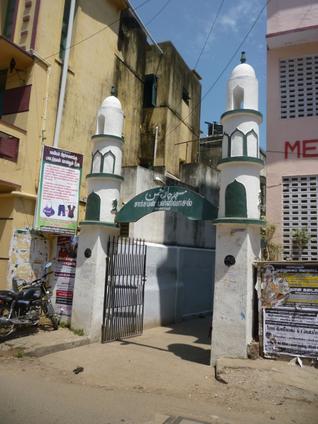
Mylapore’s history is inexhaustible and every day, something new comes up. My latest discovery has to do with Devadi Street, a small thoroughfare that links Appu Mudali Street and Kutchery Road. For long, I had assumed that this was once the courtesan quarter of the old town of Mylapore-San Thome, arguably one of the oldest parts of what is Chennai. That was because the name sounded exactly like the Tamil term for the handmaidens of god.
Recently, while reading the biography of the dramatist Pammal Sambanda Mudaliar, I came across an interesting reference. He lived on Acharappan Street in George Town. A part of this street, he wrote, was known as Mahfuz Khan Devadi as it housed a garden belonging to a noble of the Nawab’s Court.
That set me thinking. Could Devadi Street in Mylapore too have some link to a Muslim nobleman? A search in old Corporation records threw up a surprise. The street was registered as Deodi Sardar-ul-mulk Dilawar Jung Bahadur. Deodi or Deorhi is the Persian/Urdu term for a doorway and that made this the street that led to the door of Sardar-ul-mulk Dilawar Jung Bahadur, whoever that was. Over time evidently, the owner was forgotten and only his door was remembered. More probing revealed that this was not a name but actually a string of titles that belonged to none other than Mohammed Ali Wallajah, the Nawab of the Carnatic, who was such a staunch ally of the British. By the 1760s, he had moved from his capital at Arcot to Madras. According to S. Anwar, the photographer who specialises in the Mohammedan history of this region, Wallajah first settled in Mylapore. By 1768, his Chepauk Palace in Triplicane was completed and he shifted there.
So did Deorhi or now Devadi Street once lead to his garden? It may well have, for this was once the outskirts of Mylapore, beyond which was the pasture land of Mandaveli. An ideal location for a ruler to settle — close to the town and yet just outside of it. The fact that this was once a garden is further confirmed by the presence of a mosque, named the Char Chaman (four garden) Masjid. An old structure that became dilapidated before being modernised, it still has an interesting archway with minarets as can be seen in this picture. This is on Appu Mudali Street, an extension of Devadi Street. Buildings hem it in but a walk around shows that it formed a block by itself once, surrounded by Syed Hameed Hussain, Syed Nadimullah and Syed Wahab Hussain Streets.
More Islamic clues follow. Mosque Street is not far away. And just after Devadi Street meets Kutchery Road is an even older shrine – the Jumma Mosque built in 1699. All this makes Mylapore an amalgam of Hindu, Muslim and Christian faiths. What better example of secularism can there be?
source: http://www.thehindu.com / The Hindu / Home> News> Cities> Chennai / by Sriram V. / March 26th, 2013